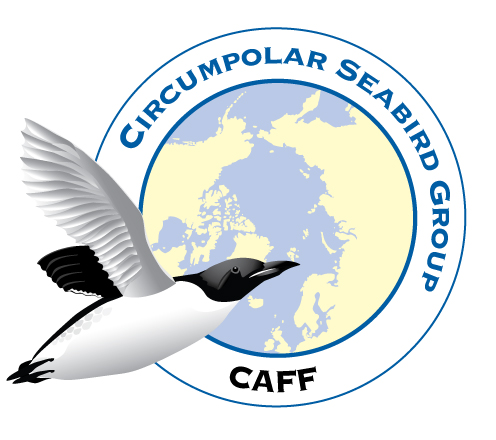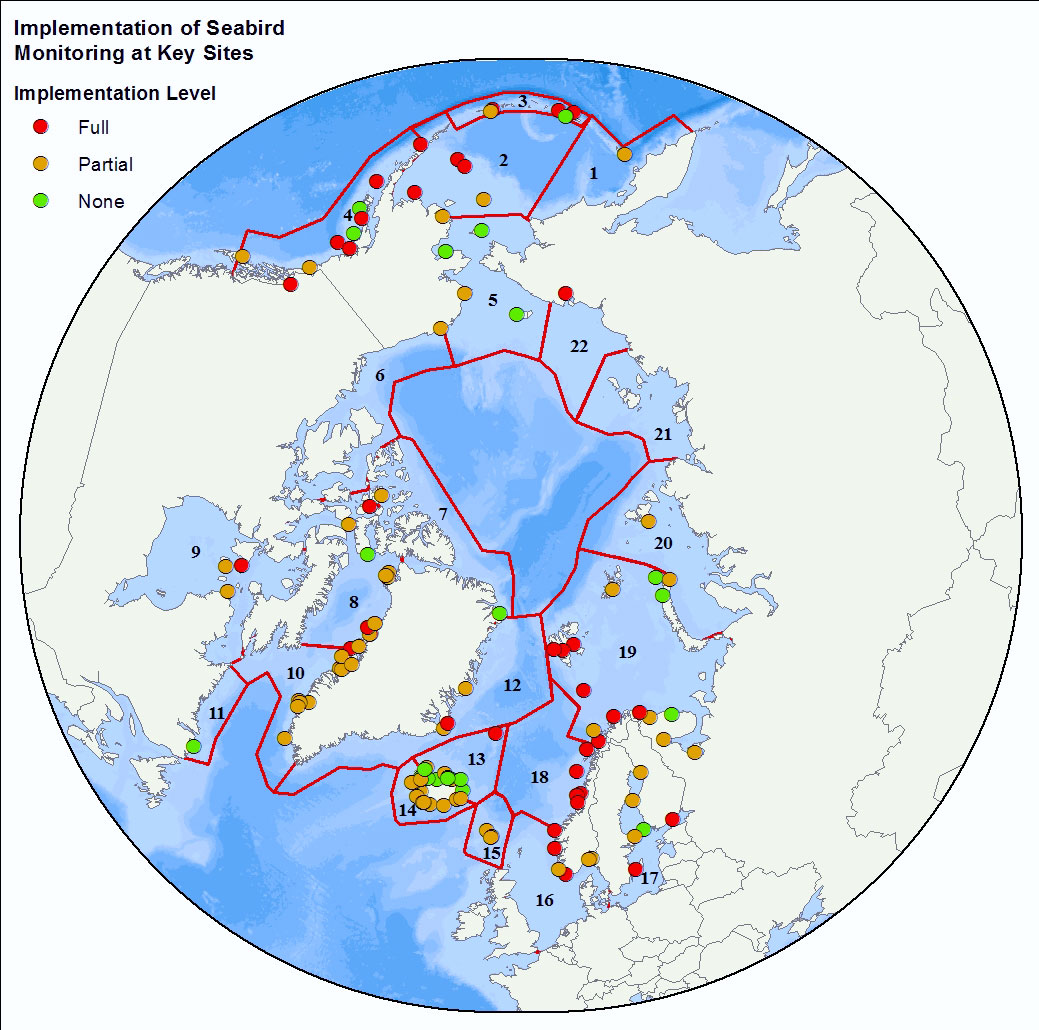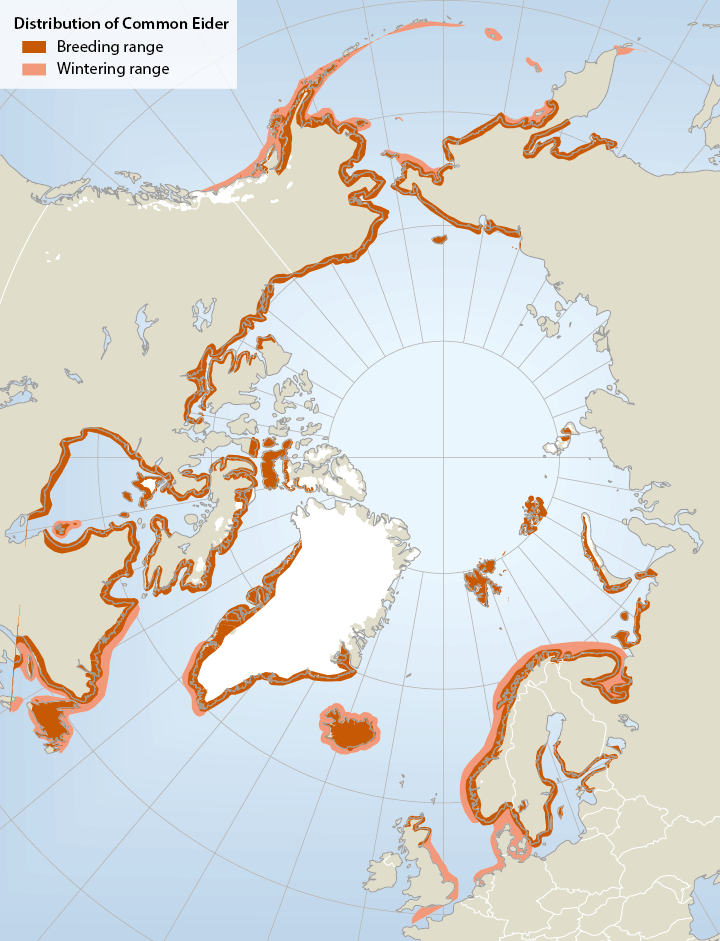seabirds
Type of resources
Available actions
Topics
Keywords
Contact for the resource
Provided by
Formats
Representation types
Update frequencies
status
-

The Seabird Information Network (SIN) developed by the Circumpolar Seabird expert group (<a href="http://caff.is/seabirds-cbird" target="_blank">CBird</a>) of the Conservation of Arctic Flora and Fauna (<a href="http://caff.is" target="_blank">CAFF</a>) working group of the Arctic Council focuses on the development of a data entry and analysis portal system allowing for circumpolar seabird colony information to be contributed, mapped, and shared by scientists and monitoring programs around the Arctic. - <a href="http://axiom.seabirds.net/maps/js/seabirds.php?app=circumpolar#z=2&ll=NaN,0.00000" target="_blank"> Circumpolar Seabird portal</a>
-

<img width="80px" height="67px" alt="logo" align="left" hspace="10px" src="http://geo.abds.is/geonetwork/srv/eng//resources.get?uuid=7d8986b1-fbd1-4e1a-a7c8-a4cef13e8eca&fname=cbird.png">The Circumpolar Seabird Monitoring Plan is designed to 1) monitor populations of selected Arctic seabird species, in one or more Arctic countries; 2) monitor, as appropriate, survival, diets, breeding phenology, and productivity of seabirds in a manner that allows changes to be detected; 3) provide circumpolar information on the status of seabirds to the management agencies of Arctic countries, in order to broaden their knowledge beyond the boundaries of their country thereby allowing management decisions to be made based on the best available information; 4) inform the public through outreach mechanisms as appropriate; 5) provide information on changes in the marine ecosystem by using seabirds as indicators; and 6) quickly identify areas or issue in the Arctic ecosystem such as declining biodiversity or environmental pressures to target further research and plan management and conservation measures. - <a href="http://caff.is" target="_blank"> Circumpolar Seabird Monitoring plan </a>
-

Breeding and wintering range of common eiders Somateria mollissima in the circumpolar region (not all southern breeding areas included).The common eider Somateria mollissima has a circumpolar distribution breeding mainly on small islands in Arctic and boreal marine areas in Alaska (Bering Sea region), Canada, Greenland, Iceland, N Europe and the Barents Sea region. In mainland Russia, there is a gap in distribution from the Yugorski Peninsula (Kara Sea) to Chaunskaya Bay in E Siberia Important wintering areas include the Gulf of Alaska/Bering Sea/Aleutian region, SE Canada, SW Greenland, Iceland and NW Europe. Six or seven subspecies are recognized, of which four occur in North America. - <a href="http://arcticbiodiversity.is/the-report/chapters/birds" target="_blank">Arctic Biodiversity Assessment. Status and Trends in Arctic biodiversity. - Birds(Chapter 4) page 150</a>
-
In 2022, the federal government launched the second phase of the Oceans Protection Plan, a vast interdepartmental program designed to enhance marine safety in Canada by improving our ability to prevent and respond to marine incidents. For the Canadian Wildlife Service (CWS) of Environment and Climate Change Canada (ECCC), this means filling gaps in our knowledge of marine and coastal bird species. In order to identify these gaps for the province of Quebec, we carried out a prioritization exercise in 2022 and concluded that major efforts needed to be made in the Nunavik marine region, since data were lacking in several sectors and for several species. Understanding the vulnerability of wildlife species over time and space will help us, among other things, to assess risks and act quickly and appropriately in the event of incidents affecting the marine environment, such as an oil spill or shipwreck. Another important objective of the Oceans Protection Plan is to implement sustainable partnerships with the Inuit in order to share our respective knowledge of migratory birds, develop joint projects and support Inuit-led marine bird projects. It is in this context that ground surveys of marine bird nests on the islands of Nunavik are being carried out by the CWS, in collaboration with Nunavimmiut. The main objective of these surveys is to update available data on the abundance and distribution of nesting seabirds in this area, particularly Common Eiders (Somateria mollissima). On each island visited, a team follows transects distributed from one end to the other and across the entire width of the island, in order to obtain complete and systematic coverage of the island and to count all the nests present. The spacing between transects can vary according to the size of the island, its topography and the density of nests present. This database provides access to the survey results and shows, for each island surveyed, the number of nests of each species present. In the case of the Black Guillemot (Cepphus grylle), since nests are very difficult to find, it is rather the number of adults present around the island that is reported. Finally, in some cases, notably for gulls (Larus spp.), if no nests were found, but adults were observed on or around the island, then a number of adult individuals was reported.
 Arctic SDI catalogue
Arctic SDI catalogue